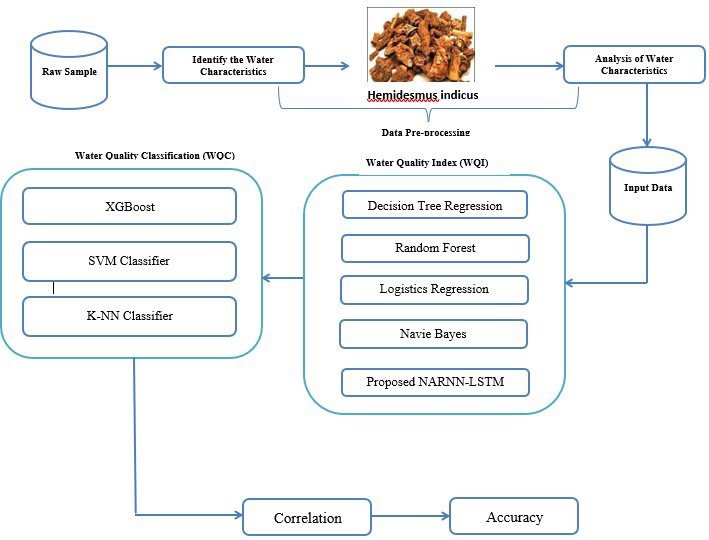
Abstract
In current years, the integrity of water quality has been jeopardized by a multitude of contaminants. Consequently, the modeling and forecast of water quality have assumed significant importance in the management and mitigation of water pollution. This study focuses on the development of sophisticated Artificial Intelligence (AI) algorithms for the purpose of predicting the Water Quality Index (WQI) and Water Quality Classification (WQC). Artificial Neural Network models, specifically the Nonlinear Autoregressive Neural Network (NARNN) and Long Short-Term Memory (LSTM) deep learning algorithm, have been devised for the purpose of predicting the Water Quality Index (WQI). In Water Quality Classification, we used XGBOOST, SVM & K-NN has been used for the forecasting. The dataset included in this study consists of 10 parameters that are deemed to be significant. The models that were constructed were subsequently assessed using several statistical criteria. The findings indicate that the suggested models have a high level of accuracy in predicting the WQI and effectively classifying water quality with improved resilience. The findings of the study indicate that the NARNN model exhibited a slightly superior performance compared to the LSTM model in forecasting the values of the WQI. Additionally, the XGBOOST algorithm attained the maximum level of accuracy, reaching 99.23%, in predicting the Water Quality Classification.
Total file downloads: 31